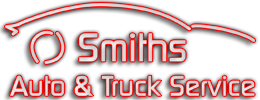Gas prices may be at a low for the time being, but that’s no reason you shouldn’t know how to improve gas mileage. The price of fuel constantly fluctuates, and gas mileage matters no matter what. You need to get back and forth to work or school every day, not to mention the fun stuff like shopping, running errands or taking vacations.
Here’s how to improve gas mileage without breaking the bank:
Regular Maintenance
A regular maintenance plan goes a long way toward improving fuel economy. Regular oil changes keep deposits from building up, so more energy is available for your wheels. Researching which oils are best for your engine can make a big difference, too. If your engine is compatible with a lighter grade of oil (0W-20 synthetic instead of 5W-30 conventional, for example), switching to the correct grade can help improve gas mileage.
Tire Pressure
Low tire pressure is critical to your vehicle’s handling, safety andfuel economy. All you need is a small air compressor, tire pressure gauge and five minutes a week to maintain proper tire pressure. It’s always recommended to set tire pressure to the specification on the Tire and Loading Information tag, located on the driver’s door or in the manual.
Proper Repair
Keep your vehicle in proper repair, such as addressing brake pull or a check engine light. Your brakes could be pulling because they’re dragging, which is a definite drain on your fuel economy. If the check engine light is on, you’re getting an instant hit to fuel economy — some estimate as high as 40 percent — because the engine controller goes into “limp home mode,” keeping the engine running, but not efficiently.
Low Rolling Resistance Tires
Eventually, your tires will wear out. When they do, consider replacing them with low rolling resistance (LRR) tires. In some cases, LRR tires are within a few dollars of non-LRR tires, so you won’t spend anything extra on your new tires, but a new set of LRR tires could improve your fuel economy by a couple of percentage points.
Weight and Aerodynamics
It only makes sense that, the more you carry, the more fuel you burn. Do you really need to bring along all that stuff? Of course, you should always carry the basics, such as your spare tire and roadside emergency kit, but there are some things that probably aren’t necessary at all, such as all that camping gear that’s been in there since your vacation three months ago. Also, roof racks and rooftop boxes add additional drag, even when empty.
Economical Driving Habits
Learning how to drive economically could have the most benefit of all when it comes to improving gas mileage. Avoid gas-guzzling habits, such as aggressive driving, speeding, jack-rabbit starts and aggressive braking. Defensive driving saves gas! Carpooling is another great driving habit that can save you up to 75 percent in refueling costs, if you can split it between four people.
Admittedly, there is no miracle fuel-saving gadget that’s going to give you exceptional fuel economy overnight. It simply doesn’t exist. But these tips combined with proper maintenance and good driving habits will help you improve gas mileage in your existing car, without spending a lot of money.
